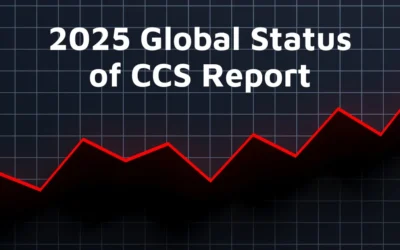In the race to net-zero, corporations are waking up to the mammoth challenge of Scope 3 emissions. Here’s how they’re hacking the supply chain to save the planet—and their bottom lines.
When Apple announced its ambitious plan to go carbon neutral by 2030, the tech giant wasn’t just talking about greening up its sleek Cupertino campus or powering its stores with solar. The real heavy lifting? It’s happening in the murky depths of its supply chain, where the bulk of its carbon footprint lurks like a submerged iceberg.
Welcome to the world of Scope 3 emissions—the final frontier of corporate sustainability, and a $12 trillion economic opportunity, according to World Economic Forum estimates.
“Scope 3 is the emissions elephant in the boardroom,” says Beau Parmenter of Dynamic Carbon Credits. “It’s where the biggest impact—and the biggest headaches—lie for most companies.”
For the uninitiated, corporate emissions are divided into three scopes. Scope 1 covers direct emissions from owned or controlled sources. Scope 2 includes indirect emissions from purchased electricity, steam, heating, and cooling. But Scope 3? That’s everything else in a company’s value chain, from the minerals mined for your smartphone to the emissions from your customers charging it.
For most companies, Scope 3 emissions dwarf the other categories. Take Walmart: 95% of its emissions fall under Scope 3. For Google, it’s 60%. These percentages represent a carbon behemoth that, until recently, has been largely unmeasured, unmanaged, and unmitigated.
But that’s changing—fast.
“We’re seeing a perfect storm of regulatory pressure, investor demands, and consumer expectations,” explains Bill Ickes, Chief Technology and Sustainability Officer at Dynamic Carbon Credits. “Companies can no longer afford to ignore their Scope 3 emissions.”
The challenge? Measuring and reducing these emissions is fiendishly complex. It requires diving deep into opaque supply chains, collaborating with hundreds or thousands of suppliers, and reimagining entire business models.
Enter the carbon cowboys of Silicon Valley. A new breed of startups is leveraging AI, blockchain, and IoT to bring transparency to the supply chain. Companies like Sourcemap and Provenance are creating digital twins of supply chains, allowing companies to track their products—and associated emissions—from source to shelf.
But technology is only part of the solution. The real innovation is happening in how companies are rethinking their relationships with suppliers and customers.
Take Unilever’s “Climate Promise” program. The consumer goods giant is working with its top 300 suppliers to halve their emissions by 2030. The carrot? Preferential contracts and access to low-carbon technology. The stick? Potential loss of business.
“It’s about creating a shared value proposition,” says Maria Gonzalez, Unilever’s Head of Sustainable Sourcing. “We’re not just asking our suppliers to cut emissions—we’re helping them become more efficient and resilient.”
Other companies are going even further upstream. Patagonia’s regenerative organic cotton program is working directly with farmers to implement practices that sequester carbon in the soil. It’s a win-win: farmers get more resilient crops and higher yields, while Patagonia gets a lower-carbon supply chain.
But perhaps the most radical approach is coming from the world of finance. “We’re seeing a fundamental shift in how companies think about their supply chains,” says Alex Stern, Managing Director at GreenBank. “It’s no longer just about cost and efficiency—it’s about carbon risk.”
Stern points to emerging financial instruments like sustainability-linked loans, where interest rates are tied to a company’s ESG performance. “Suddenly, cutting Scope 3 emissions isn’t just good for the planet—it’s good for the balance sheet,” he notes.
As companies grapple with their Scope 3 emissions, they’re discovering unexpected benefits. From increased supply chain resilience to new product innovations, the quest for carbon reduction is driving broader business transformation.
“Tackling Scope 3 emissions forces companies to really understand their value chain,” says Ickes. “That visibility is gold dust in today’s volatile world.”
The road to net-zero is long, and Scope 3 emissions represent the toughest miles. But as companies start to crack the code, they’re finding that the journey itself might be the real destination. In the race to save the planet, it turns out the biggest innovations might not be in clean tech, but in how we reimagine the very fabric of global commerce.
The carbon iceberg is melting—and reshaping the business landscape in the process.





